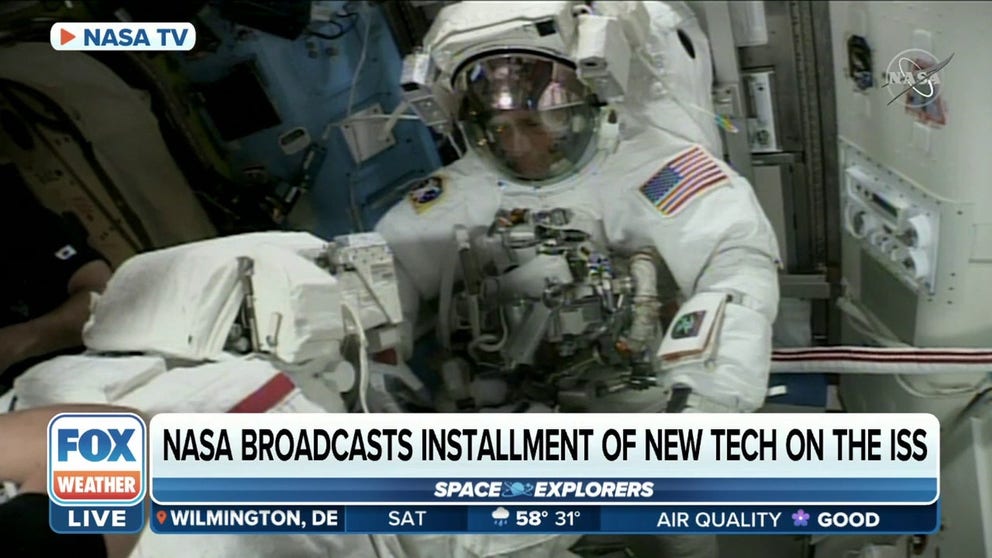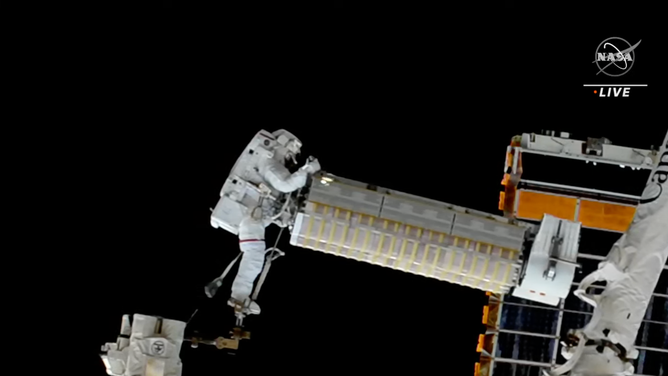Spacewalking astronauts install solar array outside International Space Station
International Space Station Roll-Out Solar Arrays (iROSA) arrived via SpaceX Cargo Dragon last month and are rolled up like carpets. The solar arrays roll out to more than 60 feet long and 20 feet wide when attached to the ISS.
NASA astronauts spacewalking to install new rollout solar arrays on ISS
NASA astronauts Frank Rubio and Josh Cassada stepped outside the International Space Station Saturday to begin a 7-hour spacewalk installing new rollout solar arrays as part of a long-term project to upgrade the station's power grid.
Two NASA astronauts stepped outside the International Space Station on Saturday to continue upgrading the orbiting laboratory's power grid.
NASA astronauts Josh Cassada and Frank Rubio started spacewalking at 7:16 a.m. EST to install an International Space Station Roll-Out Solar Array (iROSA). These new, more efficient solar arrays mark the second pair of six total arrays that will eventually be installed outside the ISS, providing a 20 to 30% power increase for the ongoing research and operations in low-Earth orbit.
The iROSAs arrived via SpaceX Cargo Dragon last month and are rolled up like carpets. After using the ISS CanadaArm2 to install the iROSAs on the station's starboard truss structure, the astronauts will release pins to allow the solar arrays to unfurl in space.
Weighing 750 pounds on Earth, the solar arrays roll out to more than 60 feet long and 20 feet wide when attached to the ISS.
During the spacewalk, Cassada's feet were attached to the space station's robotic arm, called the CanadaArm2, operated by NASA astronaut Nicole Mann from inside the ISS.
LUNAR DEPARTURE: NASA'S ORION SPACECRAFT BEGINS JOURNEY BACK TO EARTH
As the CanadaArm2 began moving Cassada and the array into position, he was asked how it felt.
"It feels light and heavy at the same time," Cassada said.
Mann and Japan Aerospace Exploration Agency (JAXA) astronaut Koichi Wakata assisted Cassada and Rubio during Saturday’s spacewalk.
The astronauts could be identified on NASA TV by their spacesuits. Cassada wore the spacesuit with red stripes, and Rubio's suit was unmarked.
Rubio and Cassada spent 7 hours and 5 minutes spacewalking outside the ISS.
Another spacewalk is planned on Dec. 19 to install the second new solar array.


